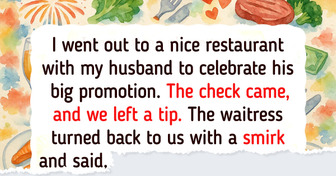hi what happened
11 Ways to Help Children Resolve Conflict Effectively
Life isn’t always easy. But while adults can argue with a friend and then make up with no problem, for children, it’s not that easy, as fights with friends can feel like the end of the world. Sometimes, parents make mistakes when it comes to teaching their children how to reach a resolution in their daily conflicts.
Bright Side wants to share 11 tips that you can apply when teaching your children how to deal with the problems they may face in daily life.
1. Help them identify their emotions.
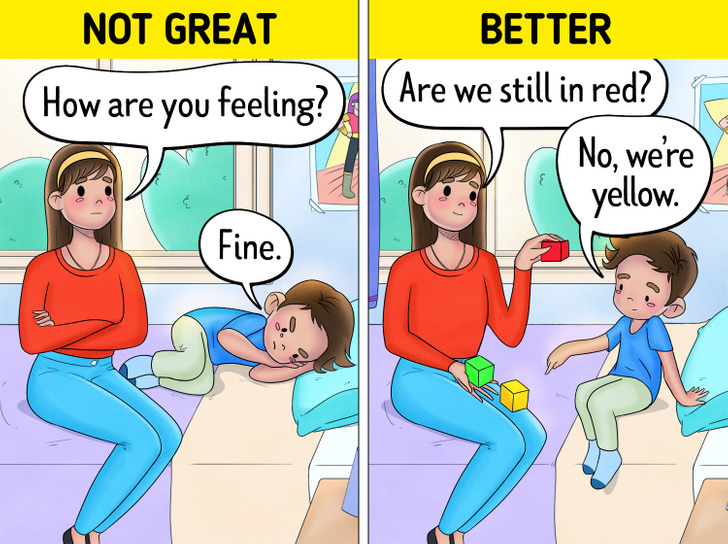
Sometimes we forget that children actually feel the same emotions as adults. However, they just don’t have the vocabulary to express them. Instead, they deal with them by externalizing their emotions, be that by making facial expressions, whining, or even through play. Thus, it’s important that when children are faced with a conflict, we help them to identify their emotions.
To do this, it’s best to ask them what they feel in the right way, avoiding simple questions with vague answers and using specific questions to identify the emotion. You can also use visual and interactive methods for the child to associate their emotions with a facial expression through a visual feelings chart or an emotion thermometer.
2. Find out where the problem comes from.
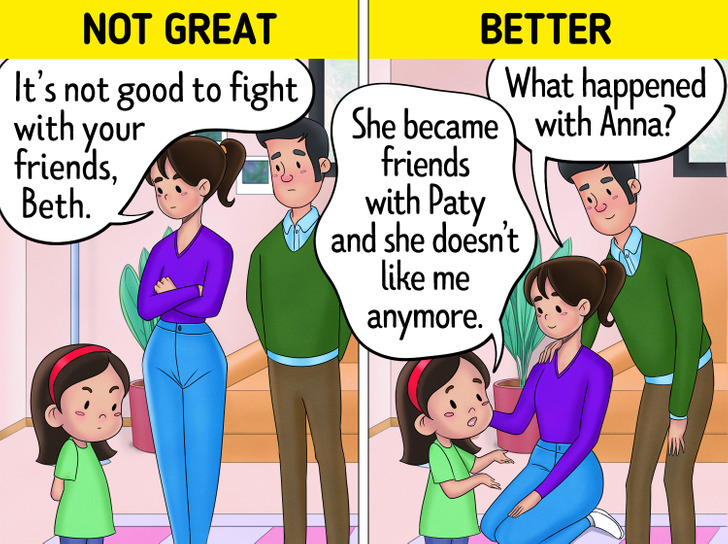
After channeling those emotions, it’s important to understand what caused that emotional outburst. For example, the child may feel angry because their older sibling did not want to play with them. However, this could have a deeper meaning, as perhaps the child feels that their sibling does not want them anymore or that they’re hanging out with other children and feel replaced.
3. Devise possible solutions.
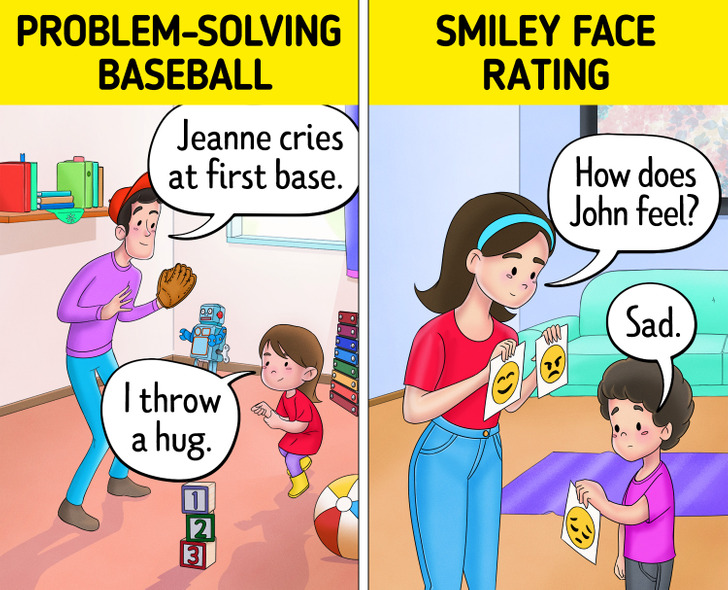
Part of problem-solving lies in the development of empathy, as children have to develop the ability to put themselves in the other person’s shoes. Over time, they will be able to recognize their emotions and those of other people as well as gain more social skills and listen to others.
There are some dynamics that can prove helpful for them to have the tools they need to solve problems when they arise. For example, problem-solving baseball makes them throw a conflict and go through bases to find a possible solution. The important thing is to help the child stay positive and assure them that even if the solution is not perfect, what they came up with is valid on some level too.
4. Always keep things in perspective.
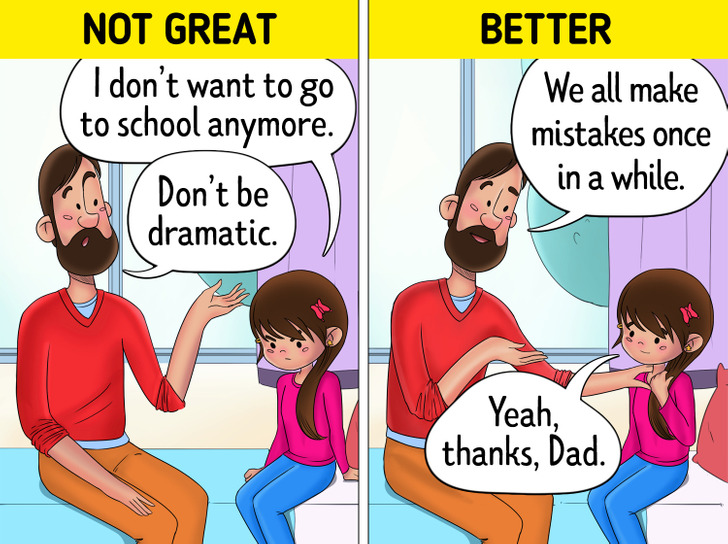
Sometimes it seems that for adults, getting the whole picture of a problem is natural and simple. However, for a child, it’s not necessarily so since a fight with a friend can feel like the end of the world.
Therefore, it’s important to help them put things into perspective so that they can practice more empathy. That will also help them slow down to think more about the context, what others are saying, and beyond what they feel happened.
5. Brainstorm ideas.
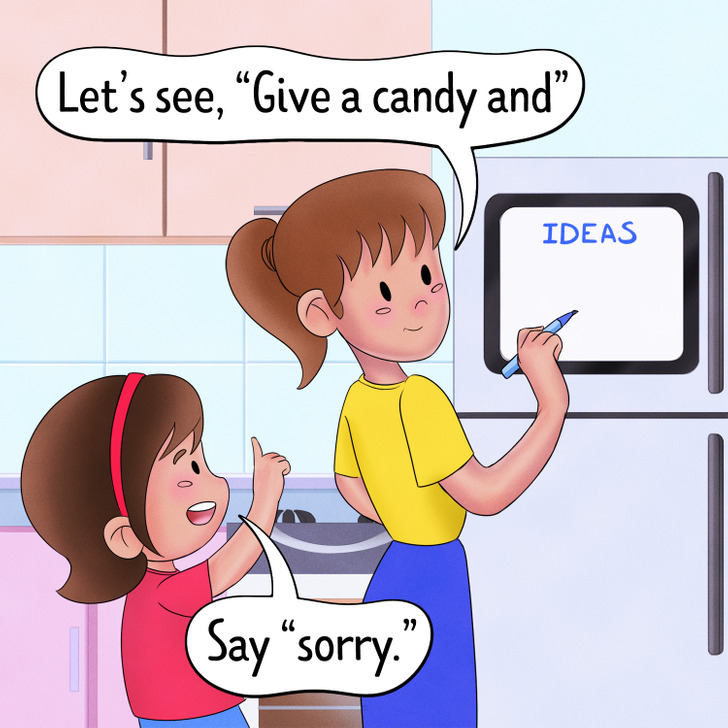
Although it sounds like a strategy that can only be applied in a work environment, it’s actually a fairly versatile method. It can be used in many contexts outside the office to improve conflict resolution skills.
After the child explains what the problem is, you can use a chalkboard and invite him or her to come up with 3 ideas on how to solve it. This helps to make conflict resolution easier in the long run and helps the child practice the method.
6. Set an example.
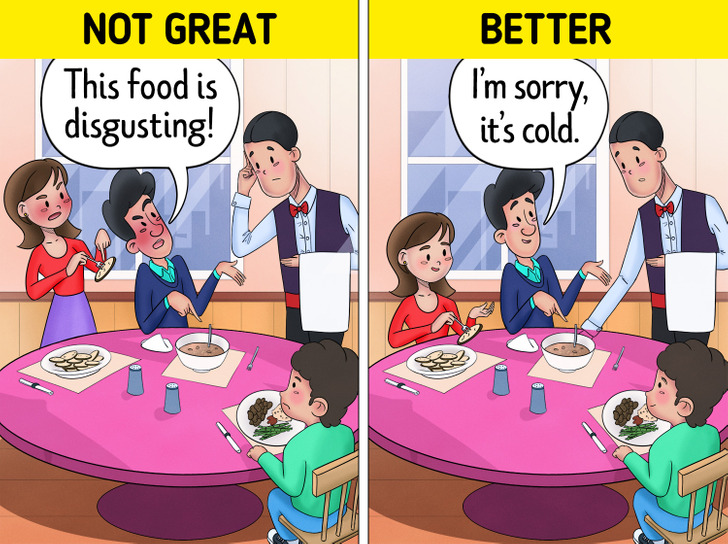
Children learn by imitating other children, teachers, and, above all, their parents since they are their closest behavioral references. Show them how to be empathetic and face problems first hand, and remember that they will always be watching their parents as role models. That’s why you should try to be the best example you can to avoid sending contradictory messages and practice all the rules of conduct that we demand children to follow.
For example, imagine you are in a store and are charged a higher sum on your credit card by mistake. Perhaps you might be tempted to get upset and scream at the cashier. But if instead of losing your temper you think about how your children will see you, you’ll likely calm down. In that case, you’ll probably find a good solution, which, in turn, will reinforce the message you’re trying to pass onto them: being calm and patient pays off. On the contrary, if you lose it, children will learn that throwing tantrums and yelling at employees is a good way to solve problems.
7. Create a jar of problem-solving sticks.
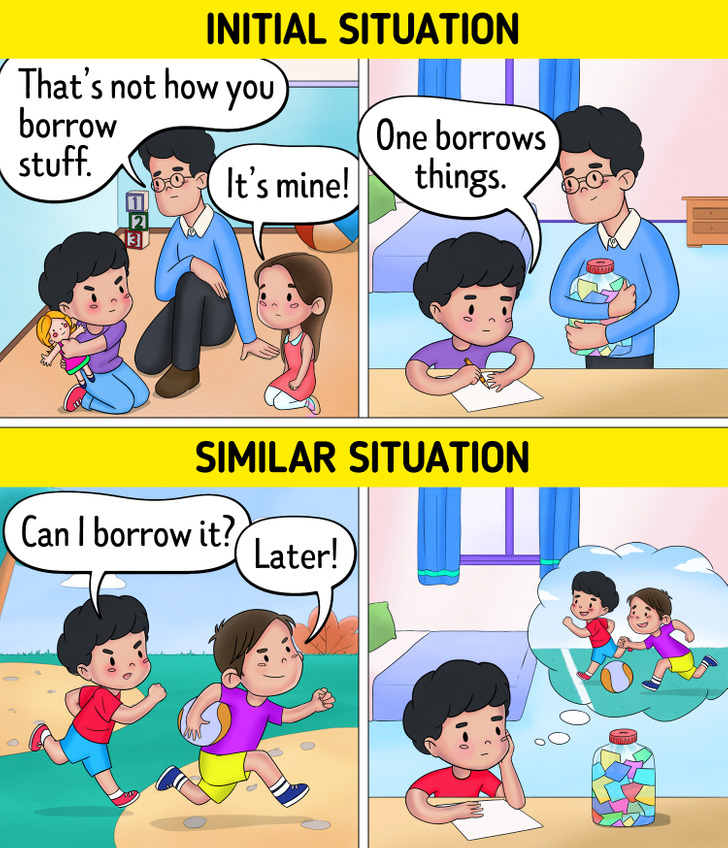
There are several creative ways to put possible solutions to problems within children’s reach. Just like putting money in a vase or a jar, you can create a jar of problem-solving sticks.
For example, if your child had a misunderstanding with a classmate and there is still no clear solution, you can talk to them about what happened and give them a hand in coming up with an option to resolve the conflict. Once they’ve reached that conclusion, the solution to that problem is written down and placed in a jar. This way, when the child has a similar situation, he/she will know what possible solution can help them just by resorting to the solution jar.
8. Use effective communication.
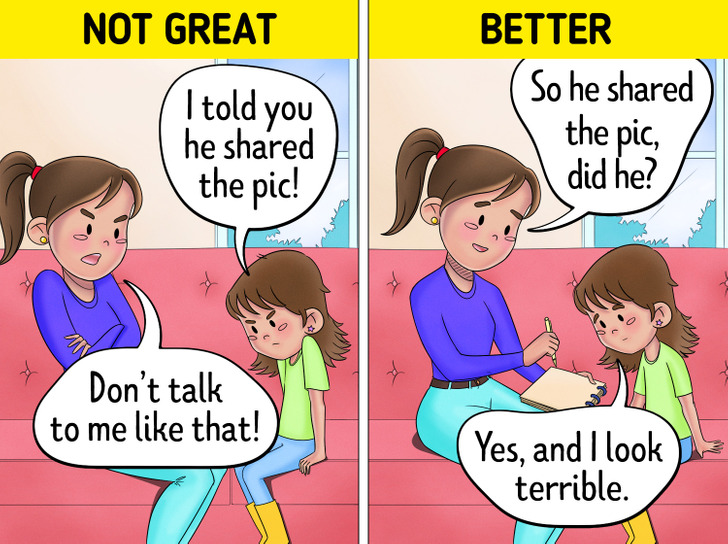
One of the keys to problem-solving is communication, which is why it’s important to practice effective and assertive communication with children so that they also learn to use it in the future.
It’s essential to listen to our children in order to help them organize and name their emotions, and for that, you can reinforce the use of phrases like “I feel...” to express those emotions or write down the main points of the conversation. This can even be a great tool for when you can’t understand what your children are trying to say.
9. There’s nothing better than a good old apology.
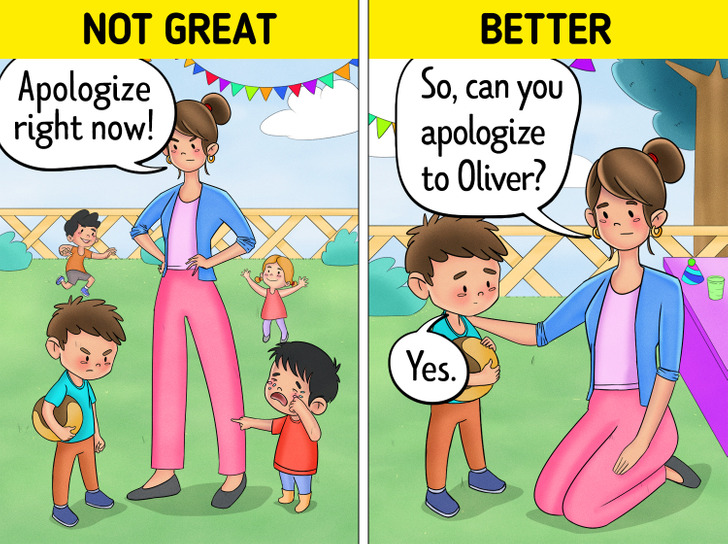
Sometimes it’s difficult to make children understand why apologizing is so important, and sometimes we mistakenly force them to apologize to someone. There are ways for them to understand the importance of a sincere apology without having to force them to do something they don’t want to do or don’t fully understand.
Let’s say your child took some candy from a younger child at a party. Some people would demand that they apologize and return the candy to the other child right away. But actually, the best thing to do is to take the child to a quieter place to talk about what happened to understand better what was going on in their head. After that, you can ask the child questions about the other child’s feelings to develop empathy for them. Once they’ve understood why their behavior was inappropriate, they’ll be ready to give a genuine apology to the other child.
10. Follow up.
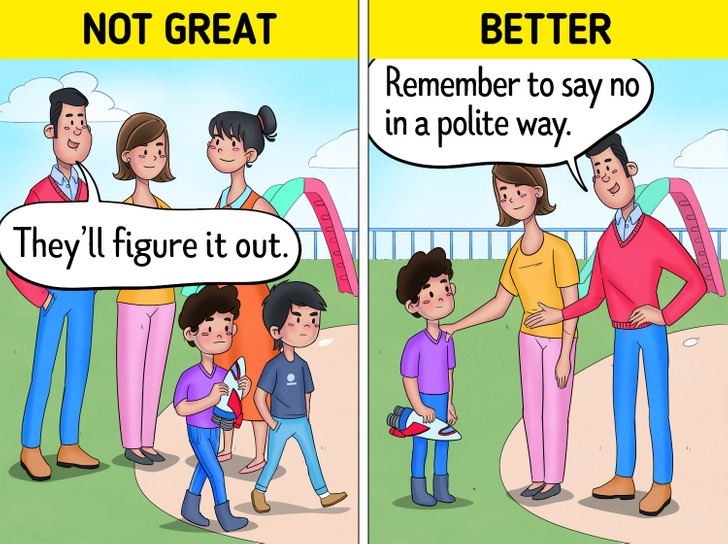
Even if the conflict seems solved, it’s always good to follow up to make sure that the child learned the lesson and that the problem-solving strategy really worked.
For example, your older son was playing a video game and his younger brother wanted to borrow it for a while, but your older son refused. After making your son understand that he must lend his video game to his younger brother for an hour, instead of leaving them alone, it’s better to make sure that what was agreed upon is followed through, and be on the lookout for another argument to further reinforce the lesson to the older son.
11. Use role-playing games.
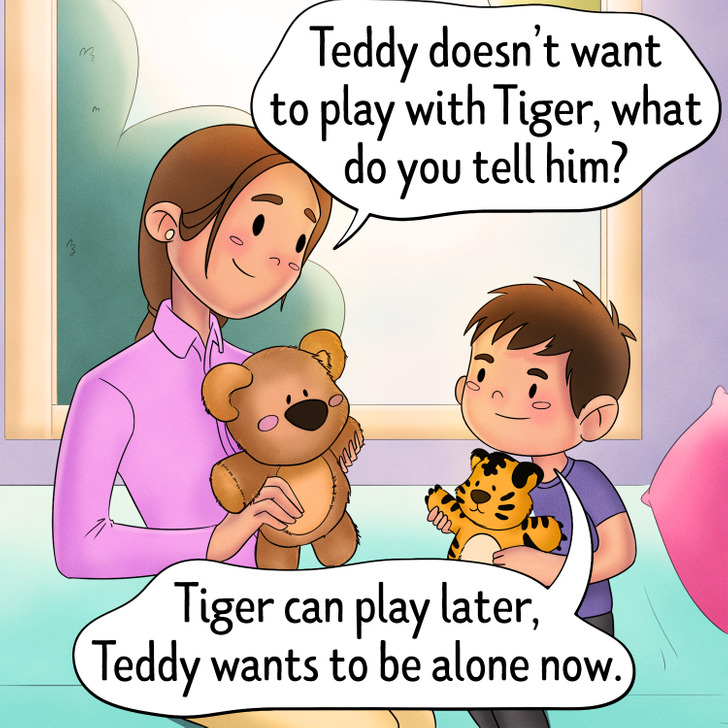
In addition to imitation, children learn through play. Role-playing is an excellent tool to stimulate their creativity and problem-solving skills so that they will learn naturally in the long run. For example, we can use our children’s toys to create a situation and act out possible solutions to solve it.
What other techniques do you know? What do you usually do to teach your children to solve problems?
Comments
Related Reads
8 Hotel Workers Reveal Creepy Situations They've Experienced on the Job
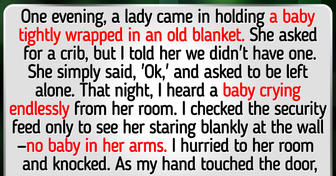
15+ Girls Whose True Age Seems Unbelievable, Even to Those Close to Them
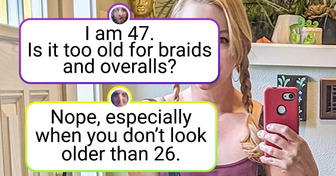
My MIL Sabotaged My Wedding Dress but I Rewrote Her Family History
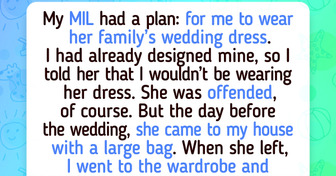
14 Betrayal Stories That Prove You Can Trust Absolutely No One
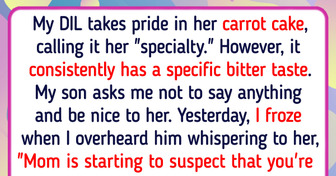
15 People Who Can Participate in “Fear Factor” After Having Guests in Their House
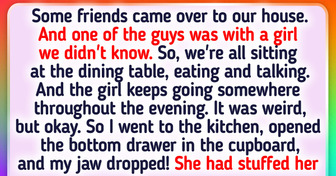
15 Parents Shared What Made Them Realize Their Kids Were Actually Small Adults

15 People Who Know What Real Danger Feels Like
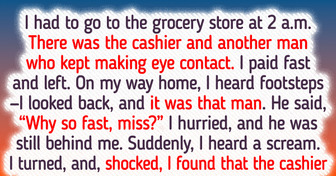
I’m Utterly Shocked After Overhearing My Fiancé and His Mom’s Malicious Plot Against Me
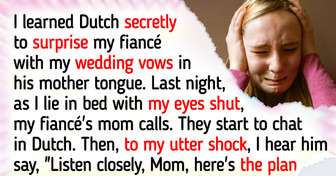
10+ Shocking Twists That Turn the Story Upside Down
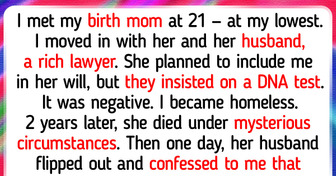
12 People Who Could’ve Never Imagined What Was Coming Next

I Left My Wife on Our Wedding Night Because of Her Sick Surprise

I Took Away a Waitress’s Tip — She Needed to Learn a Lesson
